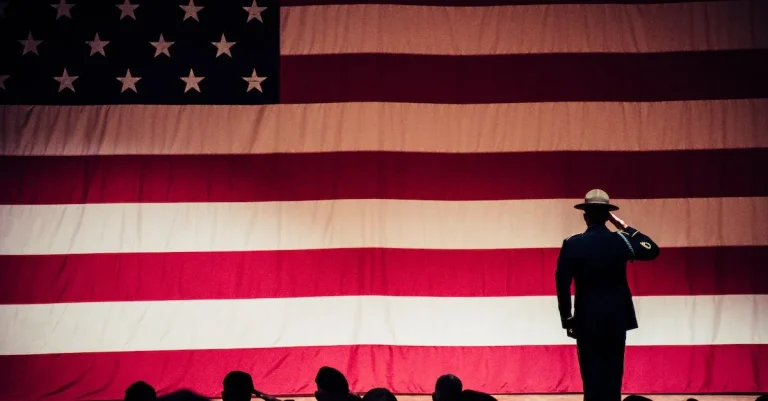How Did Miami Get Its Name?
As one of Florida’s most famous cities, Miami is recognized around the world for its sunny beaches, Latin culture, and colorful nightlife. But where exactly did its name come from? If you’re short on time, here’s a quick answer to your question: Miami gets its name from the Miami River, which was in turn named after the Native American tribe that lived around the river, the Mayaimi. In this article, we’ll dive into the full history behind the origin of Miami’s name.
We’ll look at the meaning of the original Mayaimi tribal name, how early Spanish and French explorers heard and recorded the name, and how Miami was officially chosen as the name of the growing settlement in the 19th century. We’ll also examine some popular misconceptions about the name’s origin. By the end, you’ll understand the centuries-long background that ultimately gave one Florida city its famous moniker.
Meaning and Origin of the Mayaimi Tribal Name
The origin of Miami’s name can be traced back to the Mayaimi tribe, an indigenous community that once inhabited the region where the city now stands. The Mayaimi tribe was part of the larger Native American tribe known as the Tequesta.
The name “Mayaimi” is believed to have several meanings and interpretations, all of which are significant to the native culture.
Translation and Significance to Native Culture
The word “Mayaimi” is thought to have originated from the Tequesta language, but its exact translation is still a subject of debate among historians and linguists. One interpretation suggests that it means “big water” or “sweet water,” referring to the abundant freshwater resources found in the area, including the Miami River and the Biscayne Bay.
This interpretation highlights the importance of water in the Mayaimi tribe’s daily life and their close connection to the natural environment.
Another interpretation suggests that “Mayaimi” means “big water lake.” This interpretation is based on the fact that the Mayaimi tribe lived near Lake Okeechobee, which was once known as Mayaimi in their language.
The lake was a vital resource for the tribe, providing them with sustenance and a means of transportation. The name “Mayaimi” could signify the tribe’s deep reliance on the lake and their intimate relationship with its waters.
Original Boundaries of Mayaimi Territory
The Mayaimi tribe’s territory extended beyond what is now the city of Miami. The tribe’s boundaries were mainly centered around Lake Okeechobee and the surrounding areas in present-day southern Florida.
The tribe’s presence in the region dates back thousands of years, and they thrived in the fertile lands and abundant natural resources of the area.
It is important to recognize and honor the Mayaimi tribe’s legacy as the original inhabitants of the land on which Miami now stands. Their language, culture, and way of life have left an indelible mark on the history and identity of the city.
To learn more about the Mayaimi tribe and their contributions to the region, you can visit the website of the Miccosukee Tribe of Indians of Florida at https://www.miccosukee.com/.
Use of ‘Miami’ in Early Maps and Records
Have you ever wondered how Miami, the vibrant and bustling city in Florida, got its name? The origins of Miami’s name can be traced back to the early maps and records that documented the exploration and colonization of the region.
Let’s explore the fascinating history behind the use of ‘Miami’ in these early documents.
First Appearance in Spanish Documents
The first recorded mention of ‘Miami’ can be found in Spanish documents dating back to the 16th century. Spanish explorers and settlers, such as Juan Ponce de León and Pedro Menéndez de Avilés, encountered the Native American tribes living in the area that would become Miami.
The Spanish referred to these tribes as the “Mayaimi,” which is believed to be a derivative of the Native American word “maya,” meaning “big water.”
The Mayaimi were known for their proximity to Lake Okeechobee, a large freshwater lake in southern Florida. This connection to the water likely influenced the Spanish naming of the tribe and the subsequent use of ‘Miami’ in the early records.
Adoption by French Explorers and Cartographers
Interestingly, it was not only the Spanish who used the name ‘Miami’ in their documentation of the region. French explorers and cartographers also adopted the name, further solidifying its usage. French explorers, such as René-Robert Cavelier, Sieur de La Salle, and Nicolas Sanson, included references to ‘Miami’ in their maps and journals.
The French influence on the naming of Miami can be attributed to their presence in the region during the 17th century. French Huguenots established a short-lived colony named Fort Caroline near present-day Jacksonville, Florida.
Although their settlement did not last, the French explorers and cartographers who followed in their footsteps continued to use the name ‘Miami’ in their records.
Variations in Early Spellings
As with many historical names, the spelling of ‘Miami’ varied across different documents and maps. Some variations included “Mayami,” “Maymi,” and “Miamy.” These differences in spelling can be attributed to the linguistic interpretations of different explorers and cartographers.
Over time, however, the spelling ‘Miami’ became the most widely accepted and used form. The city of Miami, as we know it today, officially adopted this spelling when it was incorporated in 1896.
Understanding the use of ‘Miami’ in early maps and records provides us with insight into the rich history of the city and its Native American roots. The name ‘Miami’ has stood the test of time and continues to represent the vibrant and diverse community that calls this city home.
Establishment of Miami as the City Name
Selection by Early Pioneer Settlers
When it comes to the establishment of Miami as the city name, it all started with the early pioneer settlers. In the late 1800s, a group of settlers arrived in what is now known as Miami. These settlers, who were mainly looking for a fresh start and better opportunities, played a crucial role in naming the city.
The exact origins of the name “Miami” are still a subject of debate. Some believe that the name was inspired by the Native American tribe of the same name, while others suggest that it was chosen as a tribute to the Miami River that flows through the city.
Regardless of the true origin, what is clear is that the early pioneers recognized the significance of the name “Miami” and its potential to represent their new home. They saw it as a symbol of growth, possibility, and a promising future.
Incorporation of the Municipal Government
After the selection of the name, the next step in establishing Miami as a city was the incorporation of the municipal government. On July 28, 1896, Miami was officially incorporated as a city, marking the beginning of its journey as a recognized and organized municipality.
The incorporation of the municipal government brought with it various benefits and responsibilities. It allowed the city to establish its own local laws, regulations, and governing bodies, enabling it to function as an independent entity.
This was a significant milestone in the development of Miami as a thriving urban center.
The city’s incorporation was a testament to the determination and vision of its early leaders and residents. They worked together to create a strong foundation for Miami’s growth and prosperity, laying the groundwork for the vibrant city that it is today.
For more information on the history of Miami, you can visit HistoryMiami.org.
Common Misconceptions About the Origin
When it comes to the origin of Miami’s name, there are several common misconceptions that have been perpetuated over the years. These misconceptions often revolve around legends linking the name to other tribes or false Native American etymologies.
Let’s take a closer look at some of these misconceptions and separate fact from fiction.
Legends Linking it to Other Tribes
One common misconception is that Miami got its name from the Miami tribe, who were thought to have settled in the area. However, this is not actually the case. The Miami tribe did inhabit the Great Lakes region, but they did not have any settlements in what is now known as Miami.
The name Miami actually predates the arrival of the Miami tribe in the region.
Another legend suggests that Miami got its name from the Mayaimi tribe, who were native to the area. While the Mayaimi tribe did exist, they were actually located in present-day Florida and not in Miami.
This misconception may have arisen due to the similarity in names, but there is no historical evidence to support this claim.
False Native American Etymologies
There are also false Native American etymologies that attribute the name Miami to various meanings in the Native American languages. One such claim is that Miami means “sweet water” in a Native American language.
However, linguists have found no evidence to support this claim, and it is likely a misinterpretation or fabrication.
Another false etymology suggests that Miami means “big water” or “large lake” in another Native American language. Again, there is no historical or linguistic evidence to back up this claim. It is important to be cautious of such false etymologies and rely on verified historical sources for accurate information.
Conclusion
In summary, Miami derives its famously sunny name from the historic Mayaimi tribe that inhabited the area for centuries before European contact. Though the meaning behind Mayaimi is obscured, we know the name identified their culture and territory along the Miami River basin. Spanish conquistadors recorded the name in the 1500s, and American settlers later chose to honor the Native origins when formally naming their frontier town Miami in the mid-1800s. The storied history behind one simple word reveals the complex interplay between Native peoples, European explorers, and American pioneers that shaped South Florida into the diverse region we know today.








